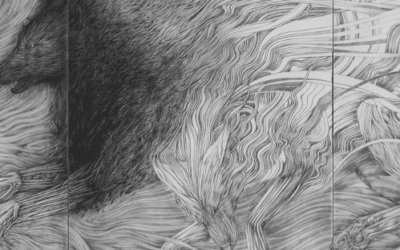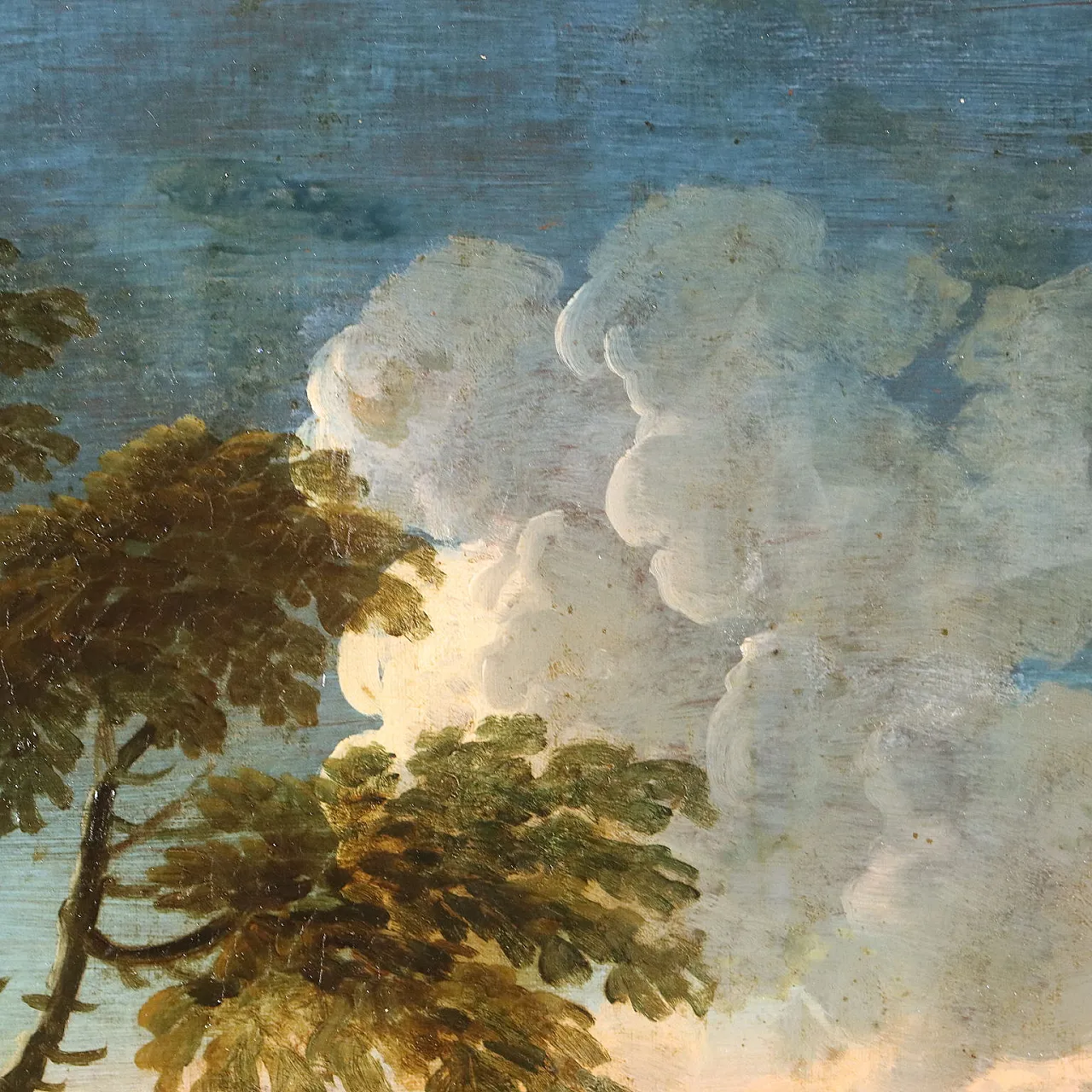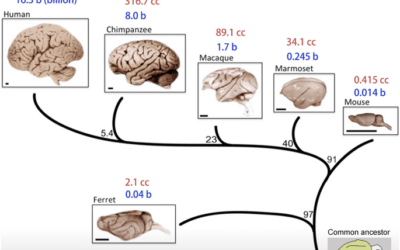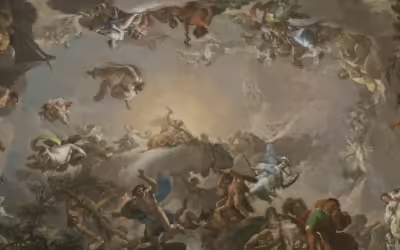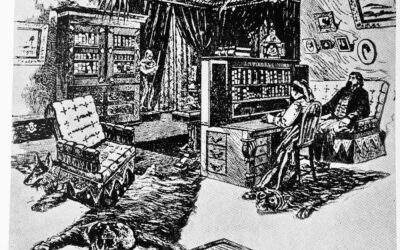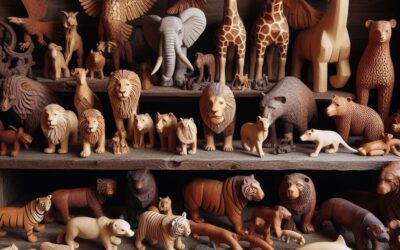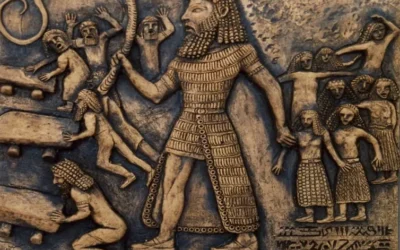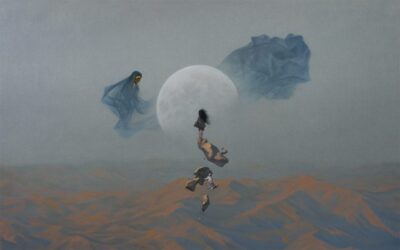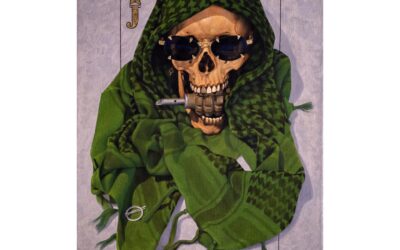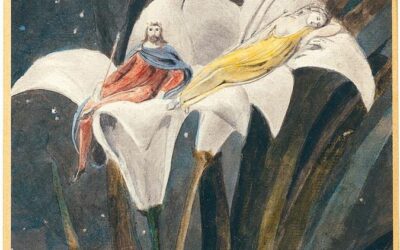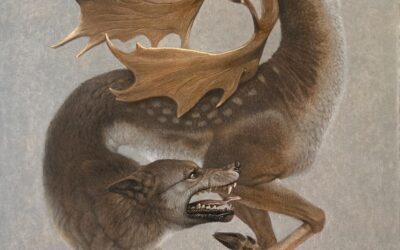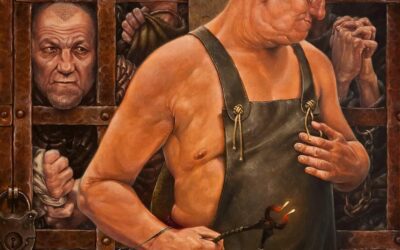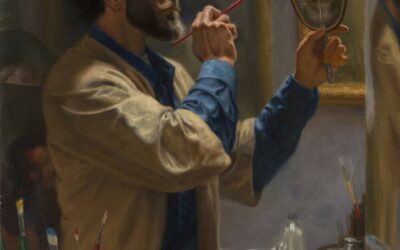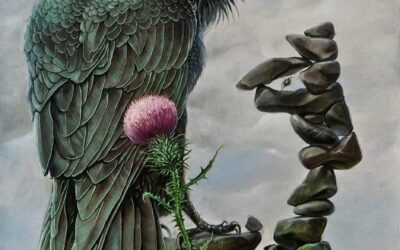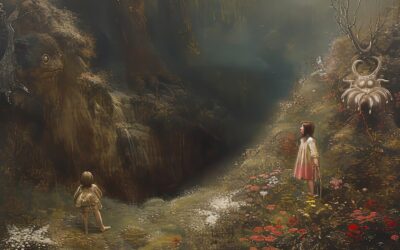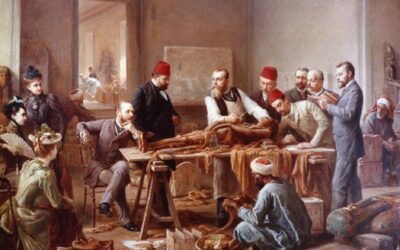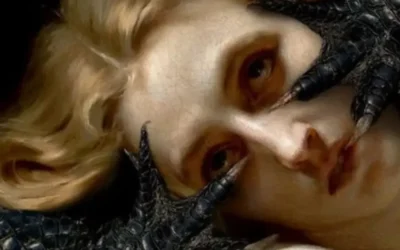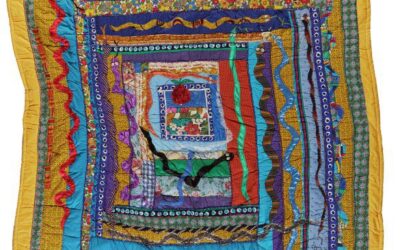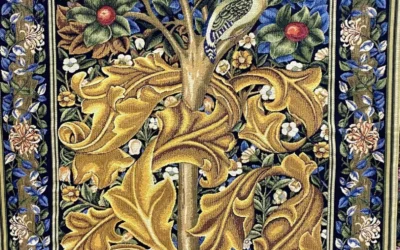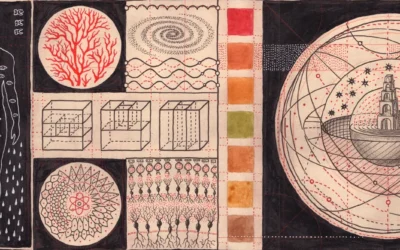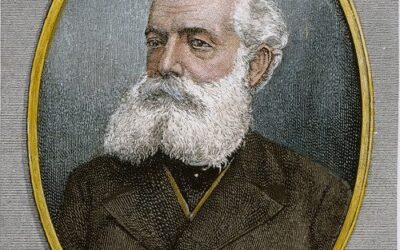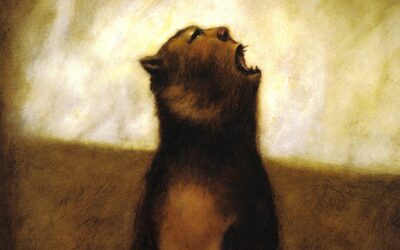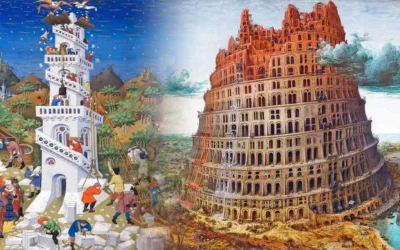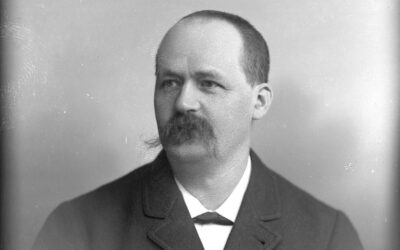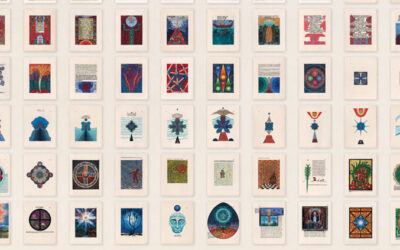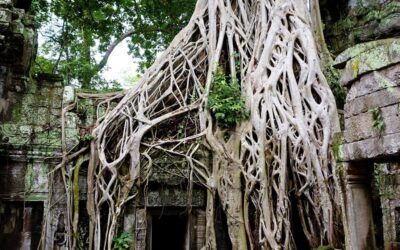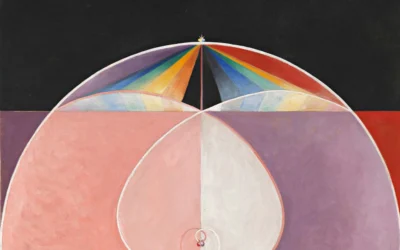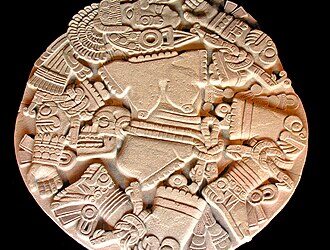The concept of the daimon—an inner guiding force representing both our authentic self and the source of creative and healing potential—has appeared throughout the history of psychotherapy under various names and conceptualizations. From Socrates' divine sign to contemporary neuroscientific understandings of intuition and trauma, major figures in psychology and psychotherapy have understood this vulnerable center of selfhood that lies paradoxically close to both our greatest gifts and deepest wounds. Through...
Symbolism and Meaning

Dive into the rich world of symbolism and meaning-making through the profound lenses of depth psychology and trauma neurology. This podcast category explores how the human psyche expresses itself through universal patterns of imagery, metaphor, and myth.
Our episodes unpack the archetypal symbolism woven through dreams, fairy tales, literature, and art. We examine how different cultures and spiritual traditions use symbols to encode deep truths about the journey of the soul. And we investigate how the traumatized mind communicates its pain through the language of symbolic symptoms and somatization.
Drawing on the groundbreaking work of thinkers like Carl Jung, Joseph Campbell, and Viktor Frankl, we explore the role of meaning and purpose in psychological resilience. We discuss how cultivating a symbolic worldview can help individuals transcend trauma by connecting their personal struggles to larger mythic narratives. We also consider how the loss of shared symbolic frameworks in our modern age contributes to the epidemic of meaninglessness and alienation.
Through interviews with Jungian analysts, comparative religion scholars, and expressive arts therapists, we illuminate the transformative power of working with symbolism in the healing process. Whether you’re a depth psychotherapist looking to enrich your practice or a person searching for a more enchanted and purposeful life, this podcast category will guide you into the numinous depths of the symbolic world.
Symbolism and Meaning: Unlocking the Unconscious in Art and Psychology
In both depth psychology and the arts, symbols carry immense power. They bridge the conscious and unconscious mind, revealing hidden truths and fostering deeper understanding. This category explores the symbolism found in dreams, myths, art, and culture, offering insights into how symbols shape our perceptions, personal narratives, and healing processes. By decoding these symbols, we gain access to the deeper layers of the psyche, aiding in the therapeutic process and enhancing our understanding of the human experience.
1. The Role of Symbols in Depth Psychology
Depth psychology places great emphasis on the unconscious mind, where symbols play a crucial role. This section dives into the works of Carl Jung and other depth psychologists to explore how symbols arise from the unconscious and serve as guides on the path to individuation. We’ll look at how archetypes, such as the shadow, anima/animus, and Self, are expressed through symbolic imagery in dreams and fantasies.
2. Decoding Dream Symbols: A Guide to Personal Interpretation
Dreams are one of the most powerful ways the unconscious communicates with us. In this subsection, we provide readers with tools to decode the symbols that appear in their dreams, using a Jungian approach. From animals to natural elements and recurring patterns, understanding dream symbolism can unlock profound psychological insights.
3. Symbolism in Art: How Artists Express the Unconscious
Artists throughout history have used symbolism to express psychological, spiritual, and cultural themes. This section analyzes how symbolic meaning is conveyed in different art forms—from painting and sculpture to film and literature. We’ll explore how artists like Salvador Dalí, Hieronymus Bosch, and Frida Kahlo used symbolism to access the unconscious mind.
4. Myth and Symbolism: Understanding Collective Narratives
Myths are rich in symbolic meaning, reflecting the shared experiences of humanity across time. Here, we explore how mythological symbols convey universal truths about human nature and psychological development. From the hero’s journey to creation myths, these stories reveal the collective unconscious and guide us toward deeper understanding and transformation.
5. The Meaning of Symbols in Different Cultures
Cultural context greatly influences how symbols are interpreted. This subsection compares how different cultures ascribe meaning to common symbols, such as water, the sun, and animals. By understanding these differences, we can appreciate the diversity of symbolic meaning across the world and how they relate to depth psychological principles.
6. Symbols in Trauma and Healing
Trauma can manifest itself through symbolic imagery, both in the therapeutic process and in creative expression. This section looks at how trauma survivors unconsciously use symbols to process pain and how therapists can help clients interpret these symbols to aid in healing. Case studies of art therapy and trauma-informed practices are included to show the power of symbolic language in recovery.
Listen to the Taproot Therapy Collective Podcast for insights on mental health topics.
Visit Taproot Therapy Collective at
2025 Shady Crest Dr. Suite 203,
Hoover, AL 35216
or call (205) 598-6471.
The Tree of Life: A Universal Symbol of Growth, Connection and Transformation
Jungian Therapy and Depth Psychology, Symbolism and Meaning in Psychotherapy
Here is the revised essay with more integrated links: What do trees in Dreams Symbolize? The Tree of Life is one of the most pervasive and enduring symbols in human history, appearing in the art, myths and religious traditions of cultures around the world. From the ancient Middle East to medieval Europe to indigenous societies of the Americas, the Tree of Life has captured the human imagination as a powerful representation of growth, interconnectedness, and the cycle of birth, death and renewal. At its most...
The Symbolism of The Pomegranate
Comparative Religion for Therapy, Jungian Therapy and Depth Psychology, Symbolism and Meaning in Psychotherapy
A Fruit Steeped in Symbolism and Spiritual Significance The pomegranate is a fruit that has captured the imagination of cultures and religions across the world for millennia. From ancient Greek myths to Jewish tradition, this unique fruit has been imbued with a rich tapestry of symbolic meanings and spiritual significance. In this exploration, we will delve into the various ways in which the pomegranate has been interpreted and revered, particularly in Jewish and Greek traditions, and how these meanings have been...
Consciousness, Emotion and the Self
Anthropology and Evolutionary Psychology for Therapy, Jungian Therapy and Depth Psychology, Symbolism and Meaning in Psychotherapy
Where Does Conciousness Come From? Where did conciousness come from?The nature of human consciousness has long been one of the great mysteries of science and philosophy. What is this subjective inner experience that seems to define our existence? Where does our sense of self come from? And what happens when the psyche is shattered by trauma? In recent decades, groundbreaking work by neuroscientists like Michael Gazzaniga and Antonio Damasio has shed new light on these profound questions. While approaching the...
How to Use Mythology as a Therapist
Jungian Therapy and Depth Psychology, Mythology and Therapy, Recovering from Abuse, Symbolism and Meaning in Psychotherapy
Insights from Greek, Norse, Egyptian, and Hindu Mythology for Psychotherapy, Creativity and Trauma Why do Depth Psychologists Use Mythology in Therapy? Mythology has long been recognized as a powerful tool for understanding the human psyche and the complexities of consciousness. Through vivid narratives and symbolic imagery, myths from around the world offer profound insights into the intricate workings of the mind, the nature of the self, and the universal experiences that shape our lives. Many therapists and...
Helena Blavatsky and the Theosophical Legacy: Charlatanry, Wisdom, and the Unconscious Mind
Jungian Therapy and Depth Psychology, Psychology of Mystics, Gurus, and Spiritual Philosophers, Symbolism and Meaning in Psychotherapy
Who was Helena Blavatsy? Helena Petrovna Blavatsky, the enigmatic and controversial founder of the Theosophical Society, left an indelible mark on the spiritual and intellectual landscape of the late 19th and early 20th centuries. Her life and work have been the subject of fascination, admiration, and criticism, making her one of the most polarizing figures in the history of Western esotericism. This essay explores Blavatsky's legacy, the key ideas of Theosophy, its similarities to other esoteric and...
How do Animals Show Up In Dreams Through Archetypes?
Anthropology and Evolutionary Psychology for Therapy, Jungian Therapy and Depth Psychology, Symbolism and Meaning in Psychotherapy
The Enduring Imprint of the Natural World on the Human Psyche Throughout human history, our relationship with the natural world has shaped our evolution, not only in terms of physical adaptation but also in the realm of the psyche. One of the most profound ways in which this connection manifests is through our relationship with and identification with animals. These creatures, both real and mythological, have long been woven into the fabric of our dreams, stories, and unconscious minds, serving as powerful...
The Epic of Gilgamesh: A Depth Psychological Reading
Comparative Religion for Therapy, Jungian Therapy and Depth Psychology, Mythology and Therapy, Symbolism and Meaning in Psychotherapy
How to Understand The Epic of Gilgamesh What is the Epic of Gilgamesh The Epic of Gilgamesh is one of the oldest surviving works of literature, dated to around 2100 BCE. This Sumerian epic poem tells the story of Gilgamesh, the hero-king of Uruk, and his adventures with his wild-man companion Enkidu. On the surface, it is a tale of heroic exploits, friendship, loss, the search for immortality, and the acceptance of death. Yet when viewed through the lens of depth psychology, the Epic of Gilgamesh can be seen as a...
The Pantheon: Myths are Public Dreams, Dreams are Private Myths
Comparative Religion for Therapy, Jungian Therapy and Depth Psychology, Mythology and Therapy, Symbolism and Meaning in Psychotherapy
"Myths are public dreams, dreams are private myths. By finding your own dream and following it through, it will lead you to the myth-world in which you live. But just as in dream, the subject and object, though they seem to be separate, are really the same." Joseph Campbell Why do they use Mythology in Therapy? Mythology has long been a source of fascination for people around the world. These ancient stories, filled with gods, heroes, and fantastical creatures, have captured the imagination of generations....
The Wizard Archetype: Mastering the Mysteries
Jungian Therapy and Depth Psychology, Symbolism and Meaning in Psychotherapy
What is the Wizard Archetype? The Wizard archetype represents the eternal human fascination with magic, mystery, and the power to shape reality. Transcending cultures and historical eras, the Wizard embodies our desire to understand and harness the hidden forces of the universe [1]. This article explores the origins, characteristics, and significance of the Wizard archetype, tracing its evolution from ancient mythologies to modern times. Explore all the Archetypes The 12 Archetypes The Sage The Innocent The...
The Explorer Archetype: Adventure and Innovation
Symbolism and Meaning in Psychotherapy
What is the Explorer Archetype? Origins and Characteristics The Explorer archetype represents the universal human desire for adventure, discovery, and the pursuit of new frontiers. Present in various forms throughout history, the Explorer embodies the qualities of curiosity, independence, and the willingness to take risks in the search for new knowledge and experiences [1]. This article explores the origins, characteristics, and significance of the Explorer archetype, examining its role in shaping human culture...
The Jester Archetype: Exploring the Creation, Destruction, and Deconstruction
Jungian Therapy and Depth Psychology, Symbolism and Meaning in Psychotherapy
What is the Jester Archetype Origins and Characteristics The Jester archetype represents the universal human desire for humor, spontaneity, and the subversion of social norms. Present in various forms throughout history, the Jester embodies the qualities of wit, playfulness, and the ability to speak truth to power [1]. This article explores the origins, characteristics, and significance of the Jester archetype, examining its role in shaping human culture and consciousness. Explore all the Archetypes The 12...
The Caregiver Archetype: Exploring the Nurturing side
Jungian Therapy and Depth Psychology, Symbolism and Meaning in Psychotherapy
“Embrace the nurturing Caregiver archetype: offering compassion, support, and protection. Understand its role in relationships and personal development.”
The Lover Archetype: Exploring Conection and Control
Jungian Therapy and Depth Psychology, Symbolism and Meaning in Psychotherapy
What is the Lover Archetype? Origins and Characteristics The Lover archetype represents the universal human desire for intimacy, passion, and connection. Present in various forms throughout history, the Lover embodies the pursuit of love, beauty, and sensual pleasure [1]. This article explores the origins, characteristics, and significance of the Lover archetype, examining its role in shaping human culture and consciousness. Explore all the Archetypes The 12 Archetypes The Sage The Innocent The Creator The...
The Everyman Archetype: Exploring the most relatable parts of self
Jungian Therapy and Depth Psychology, Symbolism and Meaning in Psychotherapy
What is the Everyman Regular Guy Archetype? Origins and Characteristics The Regular Guy/Gal archetype represents the everyday person who embodies the values and experiences of the common people. Present in various forms throughout history, the Regular Guy/Gal serves as a relatable and grounding force in storytelling and culture [1]. This article explores the origins, characteristics, and significance of the Regular Guy/Gal archetype, examining its role in shaping human culture and consciousness. Explore all the...
The Hero Archetype: Exploring the Protagonist
Jungian Therapy and Depth Psychology, Symbolism and Meaning in Psychotherapy
The Hero Archetype Origins and Characteristics The Hero archetype represents the universal human desire to overcome challenges, achieve greatness, and serve others. Present in myths, legends, and stories across cultures, the Hero embodies courage, determination, and self-sacrifice [1]. This article explores the origins, characteristics, and significance of the Hero archetype, examining its role in shaping human culture and consciousness. Explore all the Archetypes The 12 Archetypes The Sage The Innocent The...
The Creator/Artist Archetype: Exploring the Impulse to Create and Innovate
Jungian Therapy and Depth Psychology, Symbolism and Meaning in Psychotherapy
What is the Artist Archetype? The Creator/Artist archetype represents the human drive to create, innovate, and express oneself through various forms of art and craftsmanship. This archetype is driven by a deep desire to bring ideas and visions to life, often challenging the status quo and pushing the boundaries of what is possible [1]. The Creator/Artist seeks to inspire, provoke, and transform through their creative endeavors. This article explores the origins, characteristics, and significance of the...
The Ruler Archetype: Exploring the Timeless Quest for Wisdom
Jungian Therapy and Depth Psychology, Symbolism and Meaning in Psychotherapy
“Explore the power of the Ruler archetype: embodying leadership, authority, and order. Discover its impact on personal ambition and societal structures.”
The Sage Archetype: Exploring the Timeless Quest for Wisdom
Jungian Therapy and Depth Psychology, Symbolism and Meaning in Psychotherapy
What is the Sage Archetype? The Sage archetype represents the eternal human pursuit of truth, knowledge, and wisdom. Transcending cultures and historical eras, the Sage embodies our desire to understand the world and our place within it [1]. This article explores the origins, characteristics, and significance of the Sage archetype, tracing its evolution from ancient mythologies to modern times. Explore all the Archetypes The 12 Archetypes The Sage The Innocent The Creator The Explorer The Rebel The Wizard The...
The Dark Side of Haloween Candy
Symbolism and Meaning in Psychotherapy
An Overview of Haloween and its Sweet Traditions Candy is a central feature of modern Halloween celebrations, with trick-or-treating children gathering sweets from neighbors and stores stocking up on mini chocolate bars and gummy worms. Yet this sweet tradition has a complex history that reflects broader social, economic, and cultural shifts. The story of Halloween candy is a microcosm of changing attitudes towards food, festival, and community in American society and beyond. Tracing the origins and evolution of...
Monsters in Dreams
Jungian Therapy and Depth Psychology, Symbolism and Meaning in Psychotherapy
A Jungian Perspective on the Symbolism and Cultural Significance of Halloween Creatures From the depths of our collective unconscious, monsters have long haunted our dreams and nightmares. These creatures, often associated with Halloween, take on various forms, such as vampires, werewolves, zombies, and ghosts, each embodying unique fears and anxieties that we may struggle to confront in our waking lives. By examining the appearance of these monsters in dreams from a Jungian perspective, we can gain insight into...
The Mummy: A Cultural, Historical, and Anthropological Perspective
Psychology of History, Symbolism and Meaning in Psychotherapy
A History of the Mummy: Mummies have long held a place of fascination in the human imagination, serving as enduring symbols of ancient civilizations and the mysteries of life and death. From the carefully preserved remains of ancient Egyptian pharaohs to the naturally mummified bodies discovered in bogs and glaciers, mummies provide a tantalizing glimpse into the past and offer insights into the beliefs, practices, and cultural values of the societies that created them (Aufderheide, 2003). By examining mummies...
The Vampire: An Anthropological and Historical Exploration
Psychology of History, Symbolism and Meaning in Psychotherapy
Why do we believe in Vampires? Vampires have long captured the human imagination, appearing in the folklore, literature, and popular culture of societies across the globe. These enigmatic figures, often depicted as undead beings who sustain themselves by feeding on the life essence of the living, have roots that run deep in human history and mythology (Beresford, 2008). The persistent fascination with vampires can be attributed to their ability to embody and reflect the fears, desires, and cultural anxieties of...
The Evolution of Halloween Costumes
Psychology of History, Symbolism and Meaning in Psychotherapy
Costumes as a Reflection of Societal Change Halloween, celebrated annually on October 31st, has its roots in the ancient Celtic festival of Samhain, which marked the end of the harvest season and the beginning of winter. The Celts believed that on this night, the boundary between the world of the living and the dead blurred, allowing spirits to cross over. To ward off evil spirits and disguise themselves, people wore costumes made from animal skins, leaves, and other natural materials. As Halloween evolved over...
The “Lost World” of Miyazaki’s Masterpiece
Interviews and Case Studies, Phenomenology and Existential Psychology, Psychology, Psychology of Buildings and Architecture, Psychology of Film and TV, Psychology of Media and Culture, Symbolism and Meaning in Psychotherapy
*This review contains spoilers for the film The Boy and the Heron What is The Boy and the Heron trying to tell us? To escape from this depressing situation, they often find themselves wishing they could live in a world of their own - a world they can say is truly theirs, a world unknown even to their parents. To young people, anime is something they incorporate into this private world. I often refer to this feeling as one yearning for a lost world. It's a sense that although you may currently be living in a world...
The Jungian Anima and Animus: How They Show Up in Relationships
Depth Psychology Approaches and Techniques, Symbolism and Meaning in Psychotherapy
How does the anima and animus show up in relationships? The concept of the anima and animus is one of the most enduring and influential ideas to emerge from the work of Swiss psychiatrist Carl Jung. In this post, we'll take a deep dive into the anima/animus theory, exploring its origins, evolution, and practical applications in intimate relationships and family systems. We'll see how Jung's original formulation of the anima/animus was expanded upon by his proteges and successors, and consider criticisms and...
What Does the Garden of Eden Symbolize?
Depth Psychology Approaches and Techniques, Dreams and the Unconscious, Jungian Therapy and Depth Psychology, Symbolism and Meaning in Psychotherapy
The Symbolism of Eden: Language, Consciousness and the Birth of the Ego The story of the Garden of Eden, found in the opening chapters of Genesis, is one of the most well-known and influential myths in human history. On the surface, it describes the idyllic life of the first humans, their temptation by the serpent to eat the forbidden fruit, and their subsequent exile from paradise as punishment. Yet this simple narrative is laden with profound symbolic meanings that have been pondered by theologians,...
William Morris: Weaving the Threads of Myth into Design
Design Psychology, Psychology of Poets and Writers, Symbolism and Meaning in Psychotherapy
Who Was William Morris? William Morris was a designer known for his exquisite tapestries depicting scenes from myth, legend and medieval romance. More than decorative objects, these woven works invite the viewer into a mesmerizing world of archetypes, hidden meanings and the unconscious stirrings of the soul. Morris's oeuvre exemplifies many of the insights of depth psychology - the recognition that powerful symbols, when engaged with imaginatively, can connect us to profound truths within the psyche. The Mythic...
The Psychology of Design: How Our Spaces Reveal Our Minds
Design Psychology, Industrial Organisational Psychology, Psychology of Buildings and Architecture, Symbolism and Meaning in Psychotherapy
The Psychology of Design in America Design is more than just the way things look. Design is an alchemization of a culture's values, aspirations, anxieties and worldview at a particular moment in time. Like an anthropologist studying ancient ruins to understand a lost civilization, we can examine the designs of past eras to gain insight into the psyche of the society that created them. Every curve of a 1950s tail fin, every earthtone in a 1970s living room, every boxy black appliance of the 1980s was...
Friedrich August Kekulé and the Role of Intuition in the Discovery of the Benzene Ring
Christian Mysticism in Therapy, Psychology of Mystics, Gurus, and Spiritual Philosophers, Symbolism and Meaning in Psychotherapy
Who was Kekulé? Friedrich August Kekulé (1829-1896) was a German organic chemist who made several groundbreaking discoveries, most famously the cyclic structure of benzene. Kekulé's insight into the benzene ring was a pivotal moment in the history of chemistry that revolutionized the field. Interestingly, Kekulé attributed this discovery to a moment of intuition and visual inspiration that came to him in a dream. Kekulé's Dream and the Benzene Ring Structure The story of Kekulé's benzene ring discovery has become...
Embracing Your Inner Grendel:
Jungian Therapy and Depth Psychology, Symbolism and Meaning in Psychotherapy
A Jungian Perspective on Shadow Work and Healing from Fiction In his 1971 novel "Grendel," John Gardner reimagines the Old English epic "Beowulf" from the perspective of the titular monster. This postmodern retelling offers a provocative exploration of the complex interplay between hero and villain, good and evil, and the role of the shadow in the human psyche. By presenting Grendel as a thinking, feeling being grappling with existential questions and the search for meaning, Gardner invites readers to confront...
The Philosophy Behind and Around Carl Jung
Christian Mysticism in Therapy, Depth Psychology Approaches and Techniques, History of Psychotherapy, Phenomenology and Existential Psychology, Psychology of Mystics, Gurus, and Spiritual Philosophers, Psychotherapy Biographies: Historical Figures in the History of Psychology, Symbolism and Meaning in Psychotherapy
What were Carl Jung's Major Influences? Carl Jung was profoundly influenced by a wide range of philosophers, thinkers and mystics in developing his groundbreaking theories of analytical psychology. He drew upon ideas from existentialism, phenomenology, German idealism, Neoplatonism, Hermeticism, Gnosticism, and Christian mysticism to formulate his conceptions of the collective unconscious, archetypes, individuation, and the Self. Let's examine in-depth how some of these key figures shaped Jung's thought. Philemon...
Theodore Flournoy: Pioneer of Empirical Psychology and Psychical Research
Evidence Based Practice in Therapy, Phenomenology and Existential Psychology, Psychology of Mystics, Gurus, and Spiritual Philosophers, Psychotherapy Biographies: Historical Figures in the History of Psychology, Symbolism and Meaning in Psychotherapy
Who was Theodore Flournoy? Theodore Flournoy (1854-1920), a Swiss psychologist and philosopher, made significant contributions to the fields of empirical psychology and psychical research at the turn of the 20th century. His work bridged the gap between scientific psychology and the study of paranormal phenomena, influencing the development of both fields. Flournoy's innovative approaches to the study of consciousness, mediumship, and religious experiences have left a lasting impact on psychology, parapsychology,...
Understanding Carl Jung’s The Red Book
History of Psychotherapy, Jungian Therapy and Depth Psychology, Psychotherapy Biographies: Historical Figures in the History of Psychology, Symbolism and Meaning in Psychotherapy
Carl Jung's The Red Book: A Journey into the Collective Unconscious Carl Gustav Jung (1875-1961), the renowned Swiss psychiatrist and founder of analytical psychology, left an indelible mark on the field of depth psychology with his groundbreaking concepts of archetypes, the collective unconscious, and the process of individuation. These revolutionary ideas emerged not only from Jung's extensive clinical observations and theoretical studies but also from a profound personal journey of psychological transformation...
50 Common Symbols of the Shadow in Dreams
Dreams and the Unconscious, Psychology of Mystics, Gurus, and Spiritual Philosophers, Symbolism and Meaning in Psychotherapy
Introduction to Jungian Dream Interpretation: Exploring the Shadow through Symbols Carl Jung, the renowned Swiss psychiatrist and psychoanalyst, believed that dreams serve as a bridge between the conscious and unconscious mind, offering valuable insights into an individual's psyche. In Jungian psychology, the concept of the "shadow" represents the repressed, hidden, and often undesirable aspects of the self. These aspects are pushed into the unconscious because they are inconsistent with the persona, the face we...
The Divided Mind and the Quest for Meaning Part 2
Comparative Religion for Therapy, Depth Psychology Approaches and Techniques, Psychology of Buildings and Architecture, Psychology of Conspiracy Theories, Psychology of Mystics, Gurus, and Spiritual Philosophers, Symbolism and Meaning in Psychotherapy
The Divided Mind and the Quest for Meaning Part 1 Part 2 >Part 3< The Meta-Modern Mind in a Technological Age As we explore the evolution of human thought and culture, it becomes clear that the themes of the divided mind and the misappropriation of metaphor play out not only in individual psychology but also on a larger scale through cultural movements and political tides. Just as individuals struggle to reconcile their subjective experiences with objective reality, societies grapple with the...
Paganism: Insights from Anthropology, Psychology, and Comparative Religion
Anthropology and Evolutionary Psychology for Therapy, Comparative Religion for Therapy, Jungian Therapy and Depth Psychology, Symbolism and Meaning in Psychotherapy
“My point, once again, is not that those ancient people told literal stories and we are now smart enough to take them symbolically, but that they told them symbolically and we are now dumb enough to take them literally.” ― John Dominic Crossan, Who Is Jesus? Answers to Your Questions About the Historical Jesus Main Ideas and Key Points: 1. John Dominic Crossan argues that ancient people told religious stories symbolically, while modern people often interpret them literally. 2. The development of religion...
Using Jungian Psychology in Screenwriting and Fiction: Part 2 Parts Based Therapies
Depth Psychology Approaches and Techniques, Jungian Therapy and Depth Psychology, Symbolism and Meaning in Psychotherapy
Read More on Jung here: Carl Jung's Major Influences Jungian Analysis Archetypes Jung’s Method Jungian Thought Read Part 1 First! part 1: https://gettherapybirmingham.com/the-villain-with…nd-screenwriting/ part 2: https://gettherapybirmingham.com/using-jungian-ps…d-fiction-part-2/ part 3: https://gettherapybirmingham.com/applying-jungian…onality-theories/ Unveiling the Layers of the Self: Parts-Based Therapies in Psychotherapy and Fiction Main Points and Key Ideas: 1. Parts-based therapies view the human psyche...
The Symbolism of Color in Dreams
Dreams and the Unconscious, Symbolism and Meaning in Psychotherapy
What is the symbolism of different colors in dreams? What does the color red mean in dreams: In dreams, colors wield the power to mirror our deepest emotions and psychic states, and red, with its primal force and psychological weight, offers a particularly vivid palette of symbolism. The color red in dreams may reflect the journey of passion and emotion that color psychology outlines in phases of stimulation. Initially, a dream awash in pallid red tones could suggest a phase of emotional dormancy, where the...
Book Review of of Aztec Philosophy by James Maffie
Mythology and Therapy, Psychology of Buildings and Architecture, Psychology of Mystics, Gurus, and Spiritual Philosophers, Symbolism and Meaning in Psychotherapy, Trauma Treatment in Alabama, Trauma, Depth Psychology, and Social Work
Unlocking the Mysteries of Aztec Philosophy When Hernán Cortés and his expedition arrived in the Aztec capital, Tenochtitlán, in 1519, they were initially received with curiosity and even reverence by the Aztec emperor, Montezuma II.The Aztecs, interpreting the arrival of the Spanish as a potentially significant event, offered gifts and welcomed them with hospitality. In one encounter, Cortés asked Montezuma about his beliefs, inquiring about the Spanish understanding of God. Montezuma's response was cryptic and...
Exploring the Symbolic World: A Review of “The Book of Symbols”
Jungian Therapy and Depth Psychology, Symbolism and Meaning in Psychotherapy, Therapy Resources, Tips and Tools
Unveiling the Mysteries of Symbolism: A Comprehensive Review of "The Book of Symbols" by Taschen As a therapist deeply fascinated by the power of symbolism and metaphor, I am always on the lookout for resources that explore the rich tapestry of meaning behind various images and archetypes. Recently, I had the pleasure of receiving a remarkable book as a birthday gift from my wife: "The Book of Symbols" by Taschen. This voluminous tome has quickly become a treasured addition to the waiting room of Taproot Therapy,...

